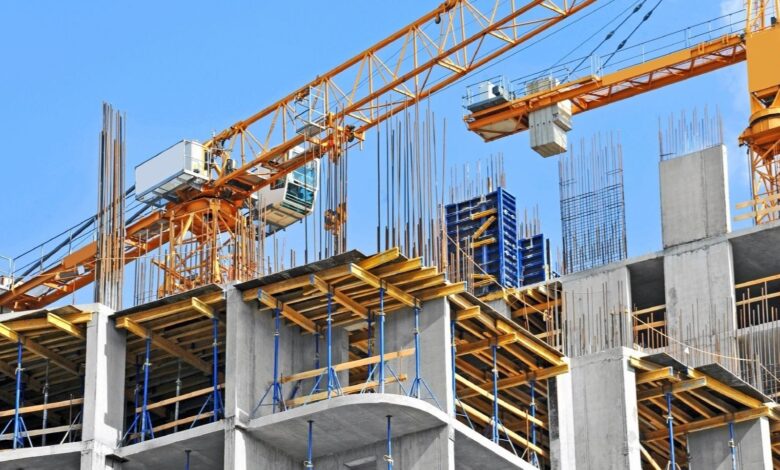Layers of Compliance in International Construction Across Regions

Building across borders brings immense opportunities and challenges, each as varied as the regions themselves. For an international construction company, understanding and complying with the unique requirements of different countries is essential to delivering successful projects. The layers of compliance—ranging from building codes to labor laws—demand attention to detail and a willingness to adapt.
Read More: 3 Things You Need To Know Before Starting a Construction Project
Regional Building Codes That Shape Project Standards
Building codes are the foundation of every construction project, dictating structural, electrical, and plumbing standards. In global construction, these codes vary significantly by region, reflecting local climate, cultural norms, and engineering practices.
For example, a project in a seismic-prone area might require stricter structural reinforcement standards than one in a temperate region. Similarly, tropical locations might emphasize ventilation and moisture control in their building codes. Adhering to these regional codes ensures that buildings are safe, functional, and compliant with local expectations.
An international construction company must remain agile, adjusting designs and materials to meet these diverse requirements. Collaboration with local experts and engineers helps ensure all aspects of a project align with the specific codes of the region.
Environmental Regulations Affecting Construction Practices
Environmental regulations play a significant role in shaping construction practices around the world. These rules protect natural resources, reduce pollution, and encourage sustainable building methods. For companies involved in international construction, understanding and respecting these laws is non-negotiable.
Some regions require strict environmental impact assessments before a project can begin, while others have specific mandates for waste disposal or energy efficiency. These regulations often reflect the priorities of the local government and community, making it essential for global construction teams to align their practices accordingly.
Sustainability is increasingly at the forefront of these regulations. International construction companies must incorporate eco-friendly designs, use sustainable materials, and minimize carbon footprints to meet both legal and ethical standards.
Labor Laws and Workforce Requirements Across Borders
Labor laws vary widely from one country to another, impacting everything from working hours to minimum wages. For an international construction company, complying with these regulations is critical to maintaining a productive and ethical workforce.
Some regions mandate specific benefits, such as health insurance or paid leave, while others have rules governing the employment of foreign workers. Companies must also ensure safe working conditions, as labor inspections are common in many countries. Understanding these requirements helps avoid legal disputes and ensures a harmonious workplace.
Hiring local workers often requires additional considerations, such as language barriers or training programs. An international construction company that invests in local talent not only meets legal requirements but also strengthens community relations.
Safety Protocols Unique to Different Countries
Safety protocols are a universal concern in construction, but the specifics often differ by country. These rules aim to prevent accidents and protect workers, and failing to comply can result in hefty fines or project delays.
For instance, some countries may require strict scaffolding inspections, while others emphasize protective gear or specific training programs. An international construction company must adapt its safety practices to meet these localized demands. This often includes coordinating with local safety officials and staying updated on changing regulations.
Beyond legal compliance, prioritizing safety builds trust among employees and stakeholders. A company that demonstrates its commitment to worker well-being is more likely to foster long-term success in international projects.
Permitting Processes That Vary by Location
Obtaining the necessary permits is one of the most challenging aspects of global construction. The processes can differ dramatically between countries, with some requiring extensive documentation and others demanding approval from multiple agencies.
For example, a project in one region might involve environmental permits, land use clearances, and construction licenses, each with its own timeline and requirements. Delays in any of these areas can disrupt the entire project. An international construction company must factor these timelines into its planning to avoid unnecessary setbacks.
Working closely with local consultants and legal experts can streamline the permitting process. These partnerships ensure that all documents are submitted correctly and on time, keeping projects on schedule and within legal bounds.
Read More: Driving Efficiency and Innovation: Business Tips for Cement Manufacturing Success
Trade Tariffs and Material Sourcing Rules for International Projects
Trade tariffs and sourcing restrictions significantly impact material costs and availability in international construction. Countries often impose tariffs to protect local industries, which can make importing materials more expensive or difficult.
For instance, a region may prioritize the use of domestically produced materials, requiring companies to adjust procurement strategies. Alternatively, some countries may have stringent regulations regarding the quality or type of materials allowed in construction. These rules can affect timelines and budgets, making compliance essential for a smooth project.
An international construction company often establishes relationships with local suppliers to mitigate these challenges. This approach not only reduces costs but also supports the regional economy, fostering goodwill and easing logistical hurdles.











